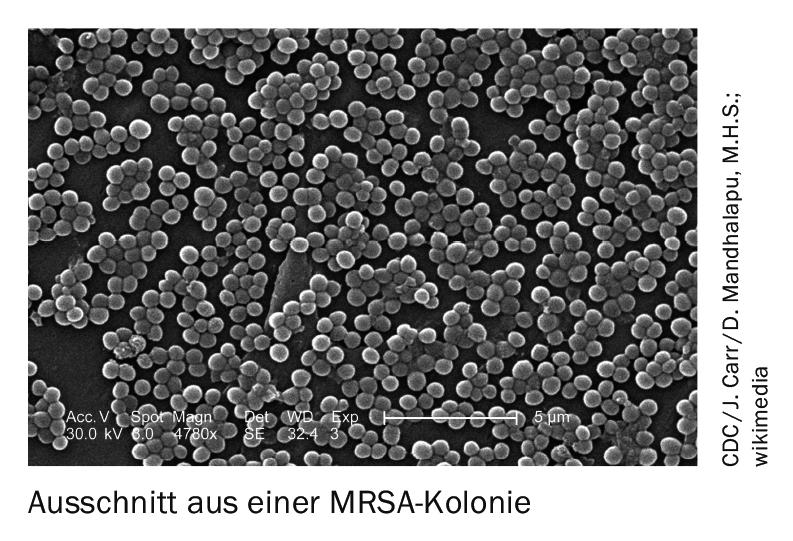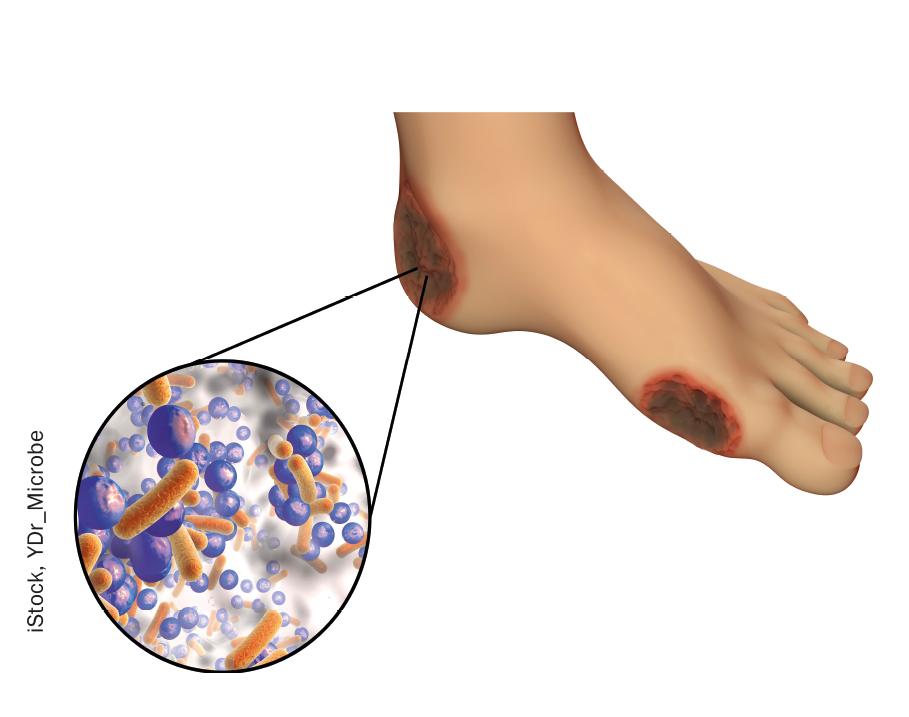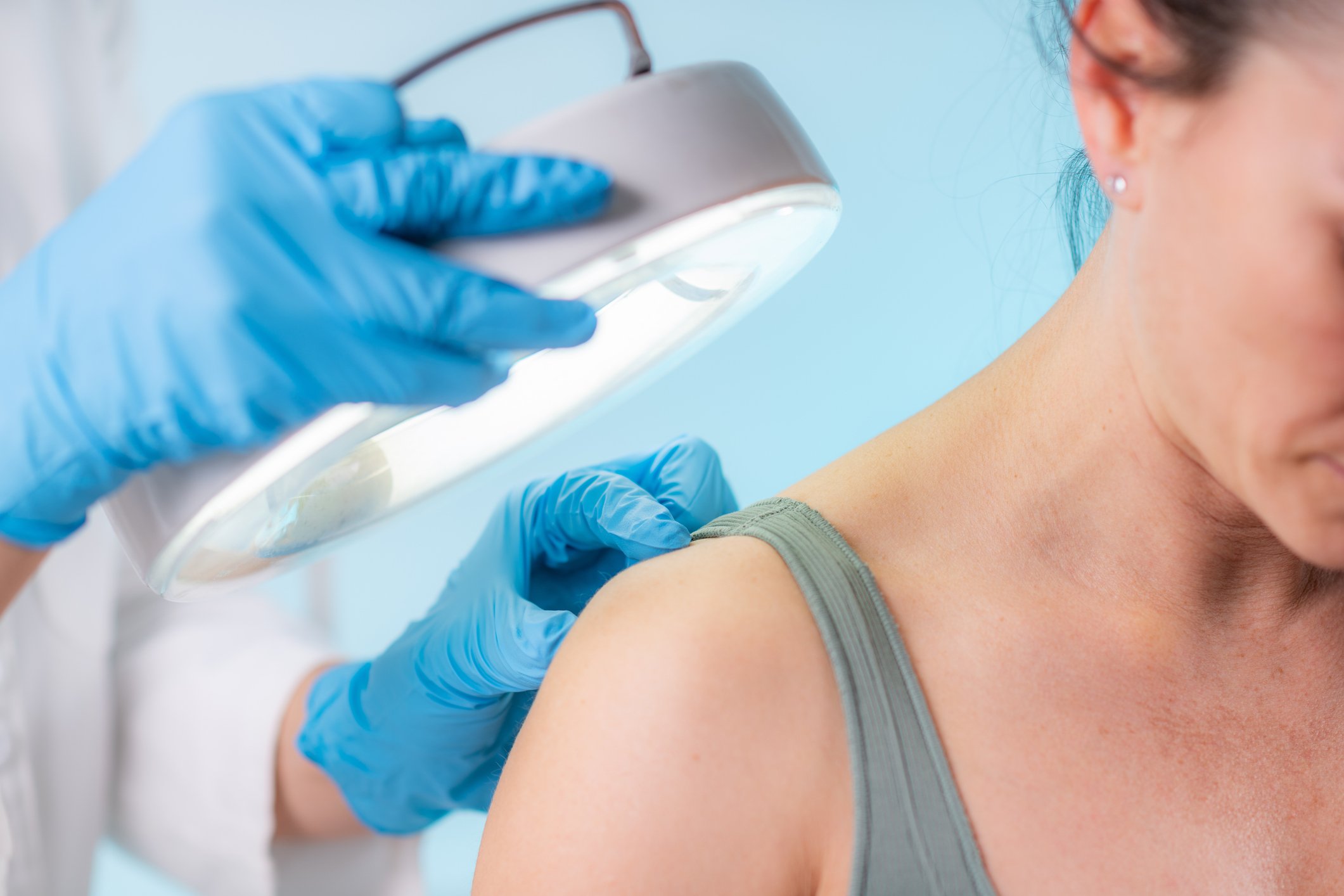One of the most important goals in the care of post-operative and traumatic wounds is the prevention of wound infections. However, uncritical use of antibiotics is problematic in view of the increasing threat of antibiotic resistance. As a secondary analysis published in the International Wound Journal shows, nanocrystalline-coated silver-containing wound dressings can make a valuable contribution to “antibiotic stewardship” as an alternative or complementary method of local wound treatment.
A chronic course develops in about one third of patients with complex wounds. Local wound infection is a central problem of impaired wound healing [1]. Therefore, antibiotics are often used, although careful consideration is not always given to whether this is necessary. Given the advances in local wound care and the growing problem of antibiotic resistance, he said, this is no longer appropriate. This is because local antimicrobial treatment strategies are available for the care of infected chronic and acute wounds as well as those at risk of infection, which take this problem situation and the current reality of care into account [2–4]. Antimicrobial wound dressings are state-of-the art for the local treatment of appropriate wounds. In antimicrobial wound therapy, the aim is to control or fight infection, which can be achieved by reducing the microbial load in the wound. The antibacterial efficacy is decisive for the further wound healing process [5].

|
“Antibiotic stewardship” refers to the rational and responsible use of antibiotics [6]. This includes, among other things, avoiding unnecessary antibiotic treatment to counteract the problem of antibiotic resistance. According to international consensus recommendations, silver-coated dressings can be used in local wound treatment without the addition of antibiotics unless the infection is spreading or has developed into a systemic infection [10]. However, especially in high-risk patients, this procedure must be weighed up individually and adapted if necessary. |
Infection control through nanocrystalline silver-coated wound dressings
Silver is an antiseptic used to prevent and treat infections as part of “antibiotic stewardship” measures [7,8]. Silver ions (Ag+) are a component of specialized wound dressings because they have a broad antimicrobial spectrum of activity as well as other relevant properties. Through a special patented process of silver application, the Acticoat™ nanocrystalline silver-coated wound dressing unfolds effective antimicrobial effects in the context of infection prophylaxis and control. Acticoat™ is characterized by a high dose, continuous release of silver, which is highly bactericidal. There is evidence that the use of nanocrystalline-coated silver-containing dressings is helpful in managing local methicillin-resistant Staphylococcus aureus infections in the context of surgical procedures and is beneficial in reducing or avoiding systemic antibiotics in patients with burn wounds. Furthermore, studies show that nanocrystalline-coated silver-containing wound dressings help to reduce treatment costs [9].


What to look out for when using wound dressings containing silver
Wound infection can be represented as a continuum of stages between wound colonization and infection. Figure 1 shows key criteria for efficient local treatment with silver-coated wound dressings [7,8]. Figure 2 shows the stage at which silver-containing dressings should be used [8,10]. In a consensus paper, a group of experts held that topical antiseptic treatment such as silver-containing dressings can be used even in severe infections [10]. However, this does not apply to all cases; for example, earlier use of systemic antibiotics may be necessary in high-risk patients. A 2020 position paper from the World Union of Wound Healing Societies indicated that antimicrobial silver dressings should only be used for a maximum of 4 weeks and that an assessment should be performed after 2 weeks [11,12]. If signs and symptoms of infection or risk of infection are no longer present, it is recommended to discontinue local treatment with the silver-coated dressing.
Literature:
- BVMed: Position Paper: Evaluation Criteria for Clinical Evidence, May 2021, www.bvmed.de
- Cooper R, Kirketerp-Moller K: Non-antibiotic antimicrobial interventions and antimicrobial stewardship in wound care: EWMA’s antimicrobial stewardship programme. J Wound Care 2018; 27(5): 1-18.
- Battle G: Antiseptic Stewardship. Biocide Resistance and Clinical Implications (1st ed.). Springer Nature Switzerland AG, 2018.
- Dienere H, et al: Care situation of vascular wounds in Germany. Vascular Surgery 2017(22): 548.
- Augustin M: Practical examples of clinical studies with medical devices and their application: Wound care. Z Evid Fortbild Qual.Gesundh.wesen (ZEFQ) 2012(10): 347-353.
- Robert Koch Institute: www.rki.de/DE/Content/Infekt/Antibiotikaresistenz/Antibiotic_Stewardship.html, (last accessed 15.03.2022).
- Woodmansey EJ, Roberts CD : Appropriate use of dressings containing nanocrystalline silver to support antimicrobial stewardship in wounds. Int Wound J. 2018(15): 1025-1032.
- Evidence in focus, Publication Summary, www.smith-nephew.com/documents/education%20and%20evidence/literature/2018/15881%20acticoat%20woodmansey%20(2018)%20eif_v2_1118.pdf, (letzter Abruf 15.03.2022)
- Glik J, et al: A 2000 patient retrospective assessment of a new strategy for burn wound management in view of infection prevention and treatment. Int Wound J 2017; 15(3): 344-349.
- Ayello EA, et al: International consensus. Appropriate use of silver dressings in wounds. An expert working group consensus. Wounds Int 2012; 1-24.
- Wounds International. International consensus. Appropriate use of silver dressings in wounds. Wounds International, London, UK. 2012.
- www.woundsinternational.com (last call 03/15/2022)
- World Union of Wound Healing Societies. Evidence in wound care. London: Wounds International 2020, www.woundsinternational.com (last accessed Mar. 15, 2022).
DERMATOLOGIE PRAXIS 2022; 32(2): 40-42












